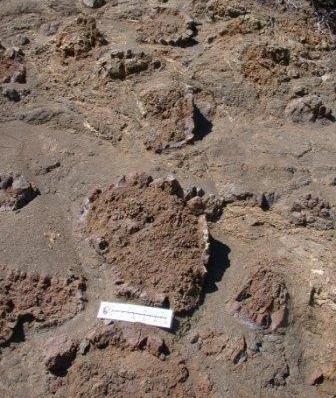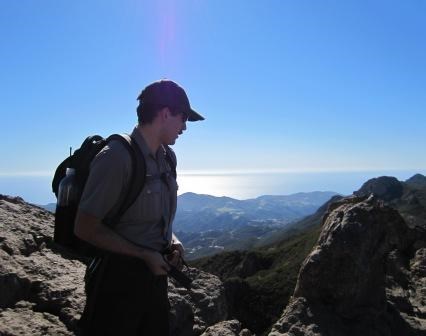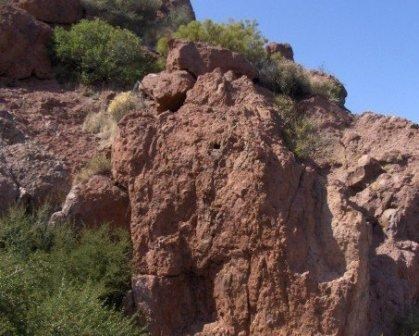|
Before the first indication of the Santa Monica Mountains, most of the rock in the area was sedimentary in origin. That is to say they came from the land or the ocean, not from a volcano. Starting about 24 million years ago (Oligocene), the Farallon Plate began to subduct beneath the North American Plate. This process known as subduction was a catalyst in the driving force that created our mountains, our volcanoes! 
As the volcanoes began to erupt, new land squeezed its way through the existing rock while at the same time uplifting the range to thousands of feet high! This would be similar to the eruptions of the Cascades in Washington and Oregon or the Andes in South America. Some of these eruptions took place underwater and created an extraordinary type of lava called pillow lavas. These egg looking, globular mounds inflated like a balloon as the outside cooled faster then the inside as they came in contact with the sea water. In the case of the Santa Monica Mountains, these pillow lavas can be over a feet in diameter! Click here to see a Quicktime video of what scientists think lava looks like forming underwater from the NOAA Ocean Explorer program. 
One of the most famous of all volcanic features in the mountains is the highest point, Sandstone Peak. Not made of sandstone at all, it is actually made out of an igneous rock called andesite. Visit Circle X Ranch and take the Sandstone Peak Trail to see different eruption events and ancient lava flows as you make your way to the top. 
These mountains are no longer the massive giants they once were. The eruptive forces and volcanoes that produced the Santa Monica Mountains are no longer active, but the modest structures they left behind, such as the iron-rich red and orange rock we see. You can learn more about volcanoes all over the world by visiting the United States Geological Survey's Volcano Hazards Program. By clicking here you can see real-time monitoring of many of the Earth's most active volcanoes. |
Last updated: March 1, 2015
